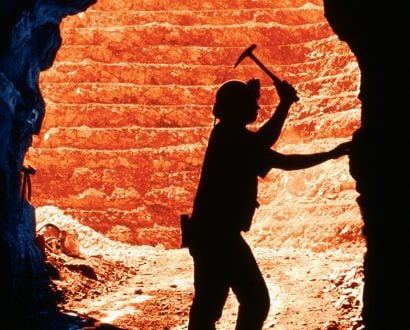Redefining job security: A lesson from the mining industry

Job security in an industry like mining is paradoxical – a fragile promise in a world governed by cycles, yet one that also offers the chance to cultivate resilience. Security becomes a flexible, living thing in sectors where the ground shifts and markets rise and fall like tides.
It’s less about a ‘job for life’ and more about purpose and endurance, about standing firm even as the landscape changes beneath our feet.
Security in such a world doesn’t mean immobility; instead, it’s the ability to thrive in an ecosystem that celebrates stability and fluidity. It’s about empowering teams with the skills and perspectives they need to weather changes and grow through them.
Today’s leaders must ask: How do we create environments where our people are strengthened by cycles, not worn down by them? This is the heart of a new vision of career resilience, which suggests security is less about where we stand and more about how well we move.
Strategies for a new era of security
Recasting security as mobility
Traditionally, ‘security’ conjured images of long-standing roles and established hierarchies. Yet, mobility becomes the ultimate guarantor of stability in a cyclical industry.

For those who work in the mining sector’s peaks and valleys, rethinking security isn’t just a strategic move. It is a profound act of purpose.
Imagine a workforce that flows as readily as the materials it mines and where skills transfer fluidly across roles, teams and continents. In this model, ‘career security’ supersedes the old promise of a lifetime job, fostering instead a lifetime of growth. Top mining firms today aren’t just filling positions; they’re building portfolios of skilled professionals ready to adapt to each cycle with resilience and poise.
Data as a compass beyond cycles
In an industry bound to the Earth’s rhythms, it’s tempting to rely on tradition. However, data analytics offers a more precise tool for navigating the cycles ahead.
Imagine workforce planning that isn’t reactive but predictive, aligning talent strategies with market movements before they occur. This foresight transforms workforce management into an art, allowing leaders to look beyond the immediate and see patterns that hold the potential for stability.
Data is more than numbers; it’s the heartbeat of an agile industry, revealing the subtle tempos that drive success.
The portfolio workforce: Diversity in motion
Think of workforce management as a garden. A traditional workforce structure is like planting a single crop, while a ‘portfolio approach’ is a diverse, balanced ecosystem. In cyclical industries, relying solely on full-time, permanent roles can make companies vulnerable to market shifts.
But imagine instead a blended workforce of full-time, part-time and contract workers that can flex and grow in response to need. This dynamic portfolio approach isn’t just practical; it mirrors the nature of cyclical industries where the power lies in the balance between growth and rest.
The agile mindset: Reskilling pods and rapid adaptation
Training can feel like steering a ship – essential but often cumbersome in mining. But what if we think of nimble, focused ‘reskilling pods’, agile groups dedicated to real-time learning and rapid skill acquisition? This approach would transform the workforce into a responsive living system that evolves as quickly as the world it operates in.
Today’s leaders must ask: How do we create environments where our people are strengthened by cycles, not worn down by them?
Picture a worker who shifts from one specialty to another within weeks, from traditional extraction methods to the latest sustainable practices. In these pods, workers learn new skills; they create a culture of adaptation.
Security beyond the project: A vision for continuity
In mining, a project can span years, which feels like an eternity and a moment in the life of a career. By redefining security to mean continuity of purpose rather than tenure in a single project, companies can offer employees a kind of stability that transcends the immediate market.
This model of project-based security connects people not just to a role but to a sequence of experiences, each enriching the next. The worker knows they will always have a place in the company’s journey, even as the shape of that journey shifts. It’s a promise of continuity, an assurance of purpose.
Why this matters now: Embracing the peaks and valleys
Industries bound to cycles, success and survival have a rhythm, almost poetry. Security here isn’t an ironclad guarantee. Instead, it’s a dance, a movement between growth and stability, a faith in the journey over the destination. Leaders who embrace these unconventional strategies offer more than mere job security; they create a culture of resilience, a future-ready workforce that finds strength in adaptability.
In my career, from BHP’s structured innovation to the adaptable strategies of consulting roles, I’ve seen firsthand that proper security is woven from agility, adaptability and the willingness to reimagine what it means to belong in an industry as complex and cyclical as mining. We don’t promise permanence; we cultivate resilience.
For those who work in the mining sector’s peaks and valleys, rethinking security isn’t just a strategic move. It is a profound act of purpose.